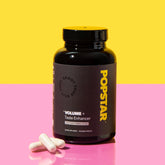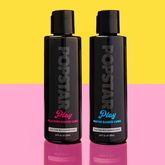The P Shot, short for the Priapus Shot, is a specialized injection-based procedure that uses platelet-rich plasma (PRP) drawn from your own blood to support various aspects of men’s sexual health. Renowned for its purported benefits in improving erectile function, sensitivity, and overall manhood wellness, the P Shot has rapidly gained consideration among those seeking natural, minimally invasive enhancements to their sexual performance. In this article, we will explore what the P Shot is, its benefits, potential side effects, frequently asked questions, and practical tips for getting the most out of this emerging therapy in regenerative men’s health.
Table of Contents
- What is the P-Shot?
- How Does the P-Shot Work?
- What Are the Benefits of the P-Shot?
- Who Is the P-Shot For?
- Potential Side Effects and Precautions
- P-Shot Frequently Asked Questions
- Lifestyle Tips to Maximize P-Shot Results
- Talk to Your Healthcare Provider
- References
What is the P-Shot?
The P-Shot, officially known as the Priapus Shot, is a non-surgical procedure designed to improve men’s sexual health by leveraging the healing and regenerative capabilities of platelet-rich plasma (PRP). PRP is derived from a patient’s own blood, making this approach particularly compelling for individuals looking for a more natural form of therapy that minimizes the introduction of foreign substances. The primary goal is to help enhance erectile function, increase sensitivity, facilitate tissue rejuvenation, and even support healthier penile tissue over time.
Named after Priapus, the Greek god of fertility, the P-Shot has gained popularity as an alternative or complementary treatment for erectile dysfunction (ED). In addition to potential improvements in overall erection quality, some men report benefits like heightened sensation and improved confidence in the bedroom. Clinics offering the P-Shot emphasize that the procedure is generally brief, often taking under an hour, and usually involves minimal downtime.
Although it is used primarily to address ED, the P-Shot is not solely limited to men with clinically diagnosed erectile dysfunction. A variety of men seeking solutions for mild performance issues, or those on the lookout for an overall enhancement in sexual wellbeing, may explore this treatment. A consultation with a healthcare professional with expertise in men’s sexual wellness is often the first step in determining whether the P-Shot is a suitable option.
Critically, while anecdotal stories abound, more research is needed to establish the long-term outcomes and efficacy of the P-Shot in large populations. Nevertheless, its popularity continues to rise as a novel regenerative approach to male sexual health. Understanding how the P-Shot is administered, its mechanism of action, and its potential side effects can help you decide if it is an appropriate course of action for your particular needs.
How Does the P-Shot Work?
The science behind the P-Shot centers on utilizing growth factors found in platelets, which are naturally present in your bloodstream. Platelets play an integral role in wound healing and tissue repair by releasing various signaling proteins that stimulate cellular growth, collagen production, and overall tissue rejuvenation.
The procedure typically flows in the following manner:
- Blood Draw: A small amount of your blood is taken, much like during a routine lab test.
- PRP Preparation: The drawn blood is placed in a centrifuge. Spinning separates platelet-rich plasma from other blood components such as red blood cells.
- Anesthetic Application: A numbing cream is often applied to the penile region to minimize discomfort.
- PRP Injection: The isolated PRP is then injected into specific areas of the penis, strategically chosen by the administering physician. Typically, multiple small injection sites are used to ensure an even distribution of the plasma.
Once platelets are introduced into targeted tissues, they release growth factors that potentially stimulate the formation of new blood vessels (angiogenesis) and enhanced cellular function. This could improve blood flow and structural support to the region where they are injected. In the context of men’s sexual health, enhanced blood flow is reciprocal with better erection quality and, for many men, increased sensitivity.
The overarching idea of the P-Shot is to encourage tissue rejuvenation rather than rely solely on symptomatic relief, as might be the case with erectile dysfunction medications. Over time, if the PRP therapy is effective, you may observe improved firmness, heightened stamina, and even a possible boost in self-confidence or sexual satisfaction. However, it is important to recognize that results may vary widely depending on individual health and lifestyle factors.
What Are the Benefits of the P-Shot?
The P-Shot is touted for its multifaceted benefits, many of which relate to both physical and emotional well-being. While results and experiences vary, men often pursue the P-Shot for the following potential advantages:
- Enhancement of Erectile Function: By targeting blood flow and tissue regeneration, the P-Shot may lead to stronger, more sustainable erections.
- Increased Sensitivity and Pleasure: Improved blood flow often correlates with heightened sensation, potentially paving the way for more gratifying intimate encounters.
- Confidence Boost: Through improvements in performance and sensation, many men experience a psychological lift that enhances self-assurance.
- Longer-Lasting Effects: Unlike conventional oral medications that address ED on a short-term basis, the P-Shot aims to spark more permanent changes in tissue health for lasting impact.
- Natural and Minimally Invasive: Since the therapy uses your own blood components, it may reduce the risk of adverse reactions.
Beyond these points, some anecdotal accounts suggest potential increases in girth or length due to the new tissue growth; however, such effects remain under research. Overall, men who respond positively to the P-Shot often appreciate a renewed sense of virility and improved relationship satisfaction. It is important to consult with a qualified healthcare provider to ensure that you have realistic expectations and to determine if the P-Shot aligns with your specific medical profile.
Who Is the P-Shot For?
The P-Shot can be an option for a diverse range of men looking to enhance or restore sexual function. Although frequently associated with erectile dysfunction, it may be a valuable choice even for those who do not have major sexual performance challenges but are interested in performance optimization or preventative measures. Here are a few groups that might consider the P-Shot:
- Men with Erectile Dysfunction (ED): Those who have tried oral medications (such as PDE5 inhibitors like Viagra or Cialis) but have found limited results or adverse side effects may find the P-Shot a useful addition or alternative.
- Aging Adults: As natural hormone levels fluctuate and blood flow diminishes with age, the P-Shot might offer rejuvenating effects on genital tissues.
- Individuals Seeking Improved Sexual Performance: Even in the absence of a clinical ED diagnosis, men looking to boost stamina, quality of erections, or overall pleasure may explore the P-Shot.
- Those Interested in Non-Surgical Treatments: For men who are cautious about surgery or synthetic implants, the P-Shot offers a minimally invasive pathway to potential improvement.
Before committing to this procedure, it’s advisable to have a thorough discussion with a healthcare professional specializing in men’s health or sexual medicine. The practitioner can analyze your medical history, review any underlying conditions, and gauge whether this procedure is likely to yield a tangible benefit for your situation. It’s helpful to remember that individual results can differ and typically depend on factors like overall health, lifestyle habits, and the underlying cause of any sexual performance issues.
Potential Side Effects and Precautions
Though the P-Shot is generally considered low-risk due to its use of a patient’s own platelets, no procedure is entirely free from possible adverse effects. Understanding these potential issues gives you a full picture of what to expect and how to mitigate problems should they arise. Some possible side effects and precautions include:
- Mild Discomfort or Bruising: Temporary redness, slight swelling, or bruising at injection sites is possible during the first few days.
- Infection Risk: While rare, any injection-based procedure carries a slight risk of infection if not administered under strict sterile conditions or if post-procedure care instructions are not properly followed.
- Incomplete Results: Although many people experience benefits, some may notice minimal or no improvement in erectile function or sensation.
- Allergic Reactions: Extremely uncommon, given the use of your own blood. However, allergic responses may relate to numbing creams or other topical agents used during the procedure.
- Potential Need for Repeat Sessions: In some cases, patients may consider additional treatments to achieve desired outcomes.
To minimize complications, choose a qualified practitioner with experience administering PRP therapies. Hospitals, clinics, and specialized men’s health centers with a track record in regenerative medicine are often reliable options. During your consultation, run through your full medical history, including any use of blood thinners, immune-related conditions, or specific concerns like diabetes or cardiovascular disease, as these factors could influence your suitability for the P-Shot.
Ultimately, the P-Shot’s relative safety profile stems from the fact that PRP is your own bodily resource, and it is typically well tolerated. Still, clear communication with a trusted medical provider is central to ensuring you are an appropriate candidate before proceeding.
P-Shot Frequently Asked Questions
Does the P-Shot treat erectile dysfunction?
Yes. One of the primary reasons men seek out the P-Shot is to help address erectile dysfunction by promoting tissue regeneration, improved blood flow, and increased sensitivity. This treatment may serve as a supplement or alternative to traditional ED medications. Always discuss your personal treatment goals and existing conditions with a qualified healthcare provider to tailor the best approach for your needs.
How many sessions do I need?
The number of P-Shot sessions required varies from person to person. Some individuals report noticeable results after one session, while others may benefit from multiple treatments spaced several months apart. Many clinics start with a single session, evaluate the patient’s progress, and then recommend additional injections if significant improvements are not observed or if further gains are desired.
Is the P-Shot painful?
Most providers use a potent topical anesthetic or numbing cream before injecting PRP, substantially reducing discomfort. Patients generally report minimal pain, often that the procedure is more tolerable than they expected. However, slight tenderness and localized swelling may appear for a short period following the treatment.
How do I prepare for the P-Shot?
It is advisable to stay well hydrated and follow any specific guidelines provided by your medical professional. Since a blood draw is involved, maintaining good hydration can make the process smoother. Avoid taking anti-inflammatory drugs like ibuprofen or aspirin for a few days leading up to your appointment, unless otherwise directed by your doctor, as these may interfere with platelet function.
Can I combine the P-Shot with other treatments?
Yes, it is not uncommon for healthcare professionals to combine the P-Shot with other therapies such as low-intensity extracorporeal shockwave therapy (Li-ESWT), hormone replacement (including testosterone), or PDE5 inhibitors (like Viagra). These complementary approaches might help men achieve more significant and longer-lasting improvements, although your provider will tailor a plan specific to your health profile.
When will I see results?
Response times vary widely. Some men notice enhancements in erection quality and sensation within just a few days, while others might need several weeks or even months to observe tangible improvements. Tissue regeneration and vascular growth are not instantaneous processes, so patience and consistent follow-up with your provider are encouraged.
Are there any restrictions after the procedure?
Generally, guidelines are minimal. Most providers ask patients to refrain from strenuous physical activity for the first 24 hours. Avoid putting excessive pressure on the treatment area for the same time frame to allow PRP to settle. Some practitioners may recommend mild exercise to stimulate circulation or provide instructions on gentle penile massage to encourage even distribution of the platelets. Always follow your practitioner’s specific post-operative instructions.
Will my insurance cover the P-Shot?
Coverage for the P-Shot can be highly variable. Because it’s considered an elective or investigational procedure by many insurers, it often does not have established reimbursement codes. Patients may need to handle the out-of-pocket expenses directly or through flexible spending accounts (FSAs) or health savings accounts (HSAs). Some clinics offer financing or payment plans to help patients manage costs.
Can all men receive the P-Shot?
Men with certain health issues–like significant heart problems, uncontrolled diabetes, or blood disorders–should proceed only under close supervision. A thorough evaluation by a specialized men’s health professional is key. Additionally, those dealing with psychological causes of ED, such as severe anxiety, may need to address underlying mental health issues in tandem with medical interventions like the P-Shot.
Do the results last forever?
Improvements from the P-Shot can be long lasting, but they are not always permanent. Some individuals see persistent benefits for a year or longer, whereas others opt for follow-up injections or adjunctive therapies, especially if underlying health conditions or lifestyle factors remain unaddressed.
Lifestyle Tips to Maximize P-Shot Results
While the P-Shot may provide cellular-level rejuvenation, your day-to-day habits can significantly influence the quality and duration of your results. Here are a few strategies to consider:
- Maintain a Balanced Diet: Focus on nutrients that boost cardiovascular health and circulation, such as leafy greens, berries, whole grains, and lean proteins.
- Regular Exercise: Aerobic workouts and resistance training promote healthy blood flow, support hormone balance, and contribute to overall sexual vitality. Moderate intensity routines can enhance the ongoing benefits of the P-Shot.
- Stress Management: Chronic stress can disrupt hormone levels and blood pressure, negatively impacting sexual performance. Techniques like mindfulness, deep breathing, or structured relaxation exercises can help mitigate these effects.
- Limit Alcohol and Smoking: Both alcohol abuse and smoking can constrict blood vessels and impair cardiovascular health, counteracting the P-Shot’s goal of better blood flow.
- Focus on Sleep: Sufficient, high-quality sleep supports hormone regulation, tissue repair, and overall recovery, optimizing the P-Shot’s regenerative benefits.
By integrating these practices into your lifestyle, you help create an environment where platelet-rich plasma can effectively flourish, leading to better outcomes and sustained sexual health improvements.
Talk to Your Healthcare Provider
Before embarking on the P-Shot or any form of regenerative therapy, consult with a qualified healthcare provider. This discussion may involve:
- Medical History Review: Disclosing your past and current health conditions helps your provider decide if you are an appropriate candidate.
- Blood Work: Basic lab tests can provide clarity on hormone levels, cholesterol, and other markers that influence sexual health.
- Realistic Expectation Setting: Your practitioner will discuss what you can reasonably anticipate in terms of results and whether additional or alternative treatments may be needed.
- Procedure Explanation: Ensuring you have a firm grasp of the technique, from blood draw to injection, fosters greater trust and comfort.
It’s also prudent to inquire about the practitioner’s experience and success rates in administering the P-Shot. Considering this is a relatively novel approach, seeking a professional who frequently performs PRP procedures may give you more confidence and potentially better outcomes.
References
- Centre for Regenerative Medicine Research. (2021). Platelet-Rich Plasma in Urology: An Overview.
- Johns Hopkins Medicine. (2020). Erectile Dysfunction: Causes and Treatment.
- American Urological Association. (2019). Clinical Guidelines for the Diagnosis and Management of ED.
- Smith, L., & Johnson, R. (2021). Regenerative Therapies in Sexual Medicine: Evaluations and Outcomes. Journal of Men’s Health.
- Cleveland Clinic. (2020). Platelet-Rich Plasma (PRP) for Men’s Health: What You Need to Know.
- International Society for Sexual Medicine. (2022). PRP for ED: A Growing Frontier in Sexual Health.
- American Academy of Anti-Aging Medicine. (2019). Advancements in PRP and Tissue Regeneration.
- Harvard Health Publishing. (2021). Lifestyle Factors Affecting Sexual Wellness.
- Andrology Journal. (2020). PRP Injection Safety Profile in Male Sexual Dysfunction.
- Mayo Clinic. (2021). Understanding the Science Behind Platelet-Rich Plasma Therapy.
































